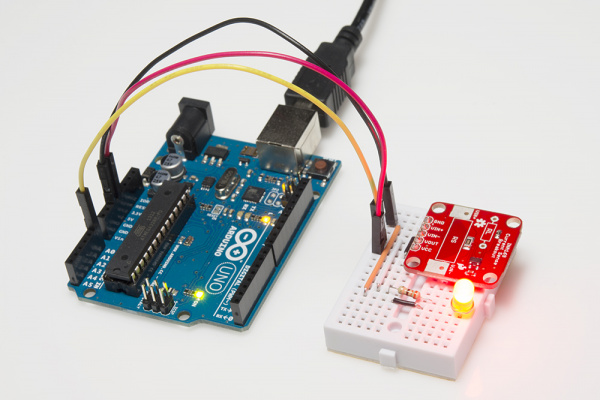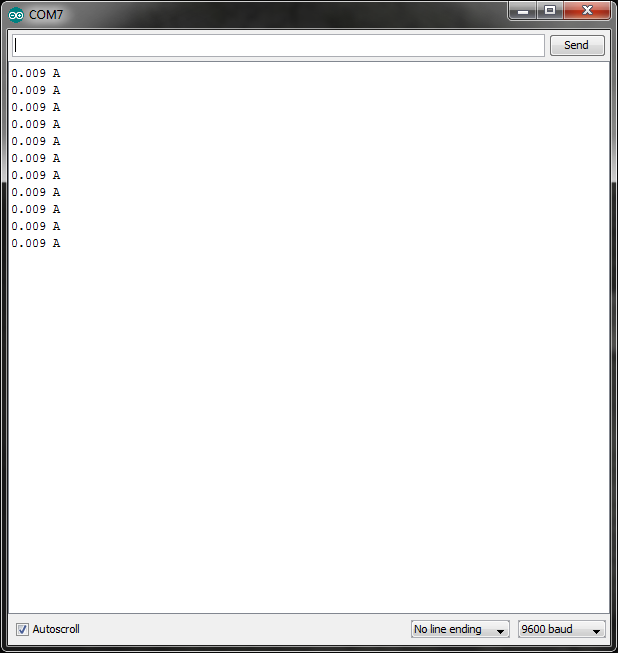INA169 Breakout Board Hookup Guide
Example Code
Open the Arduino program and paste the following code into the sketch:
language:c
/*
11-14-2013
SparkFun Electronics 2013
Shawn Hymel
This code is public domain but you buy me a beer if you use this
and we meet someday (Beerware license).
Description:
This sketch shows how to use the SparkFun INA169 Breakout
Board. As current passes through the shunt resistor (Rs), a
voltage is generated at the Vout pin. Use an analog read and
some math to determine the current. The current value is
displayed through the Serial Monitor.
Hardware connections:
Uno Pin INA169 Board Function
+5V VCC Power supply
GND GND Ground
A0 VOUT Analog voltage measurement
VIN+ and VIN- need to be connected inline with the positive
DC power rail of a load (e.g. an Arduino, an LED, etc.).
*/
// Constants
const int SENSOR_PIN = A0; // Input pin for measuring Vout
const int RS = 10; // Shunt resistor value (in ohms)
const int VOLTAGE_REF = 5; // Reference voltage for analog read
// Global Variables
float sensorValue; // Variable to store value from analog read
float current; // Calculated current value
void setup() {
// Initialize serial monitor
Serial.begin(9600);
}
void loop() {
// Read a value from the INA169 board
sensorValue = analogRead(SENSOR_PIN);
// Remap the ADC value into a voltage number (5V reference)
sensorValue = (sensorValue * VOLTAGE_REF) / 1023;
// Follow the equation given by the INA169 datasheet to
// determine the current flowing through RS. Assume RL = 10k
// Is = (Vout x 1k) / (RS x RL)
current = sensorValue / (10 * RS);
// Output value (in amps) to the serial monitor to 3 decimal
// places
Serial.print(current, 3);
Serial.println(" A");
// Delay program for a few milliseconds
delay(500);
}
Plug in the Arduino and upload the code. You should see the LED light up as soon as you apply power.
Select the appropriate board (Arduino Uno in this case) from Tools->Board and the correct COM port from Tools->Serial Port. Click the upload button, and wait for the program to be compiled and uploaded to the Arduino. Open the Serial Monitor from Tools->Serial Monitor and you should see current measurements being printed.
If we want to verify this reading, we can use a multimeter to measure the voltage across the 330Ω resistor. You should see around 3V across the resistor. Using Ohm's Law, we can calculate the current flowing through the resistor and LED is 0.00909 A, which matches the reading from the INA169.

